Dear friends of art and music,
On Saturday, 09 April 2016 the vernissage of Otto von Kotzebues’ new exhibition “East-West” took place. Beforehand there was a wonderful concert by the two musicians Natalia Lentas and Wei Lee on the fortepiano with pieces by Johann Christian Bach, Joseph Haydn and Ludwig van Beethoven among others. To be able to hear these pieces, some of which are already known, on this historical instrument, especially by these two outstanding young talents, was a real listening pleasure and at the same time very interesting, since the sound of a fortepiano is very different from that of a modern instrument!
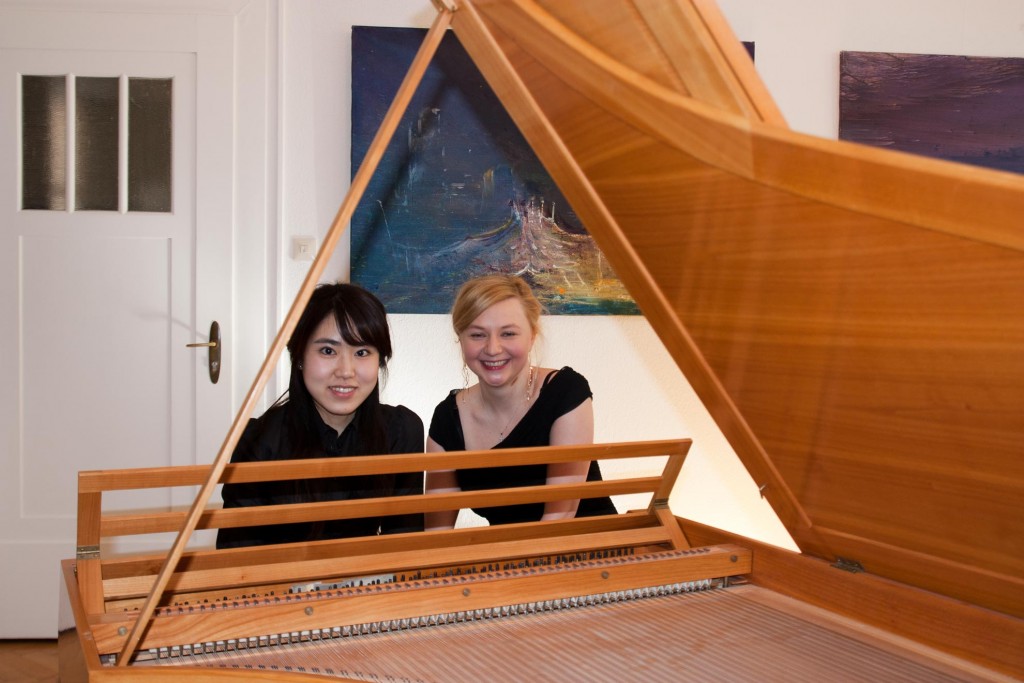
Wei Lee and Natalia Lentas

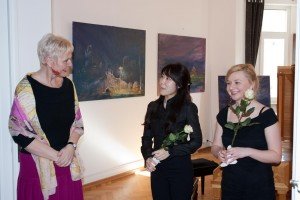
After a short break, we moved on to the main part of the program with the introductory speech by my son Johannes Paqué and the subsequent tour with the artist. Thereby we got an intensive impression of the artist’s background, which led him to create his works. Starting with the highly interesting family history, beginning with the famous playwright August von Kotzebue (his great-great-grandfather), through his sons (especially Alexander von Kotzebue, who was a famous battle painter with many commissions by the tsar of the time and who is Otto von Kotzebue’s great-grandfather), and even Albert L. Kotzebue, a distant relativ who at the end of the 2nd World War was actually the first American to shake hands with a Russian officer (history books usually always mention William D. Robertson as the one). From all this the special connection already emerged that Otto von Kotzebue has with both countries, which was certainly one of the reasons for his motivation to travel intensively through both countries. In the further course of the lecture, Johannes Paqué discussed Otto von Kotzebue’s biography as well as the artists William Turner and Edward Hopper, who served as the artist’s artistic inspiration. Finally, Johannes Paqué devoted himself to the special characteristics that distinguish the artist’s works so much. Thus, especially with regard to Russia and America, the geographical location of both countries plays an important role in terms of color design, but it is also precisely the human being – how it lives and feels – that plays a special role in the artist’s work and is sometimes found shadowily in the paintings or becomes identifiable only through the influence on it’s environment. For example, when the artist shows a McDonalds sign on the side of the road in the middle of the Sonoran Desert, thus simultaneously referring to the expansive character of Americans, but at the same time capturing this vastness and the accompanying isolation and forlornness that may touch a viewer at such a sight.
Here you can also watch the introductory lecture again as a video (in German):
Finally, Otto von Kotzebue led the visitors through the exhibition and answered many more questions that had irrevocably imposed themselves on the visitors.

Gabriele Paqué, Johannes Paqué, Otto von Kotzebue


Photos: Florian Roth & Johannes Paqué
I would now like to thank all visitors for coming and would be very happy to welcome you soon again in my music studio and gallery!
Greetings to you,
Gabriele Paqué
Here is the review of the exhibition in the General Anzeiger of 30 April / 01 May 2016:
Below you will find the paintings of the exhibition.
Dear friends of art and music,
I would like to invite you to the vernissage of the artist Otto von Kotzebue. The painter and architect, who lives and was born in Munich, traveled to many different countries in his life and has since then given expression to his introspective impressions and experiences in watercolors and oil paintings. A special place is taken by the two controversial countries Russia and the United States, which he traveled and learned to love, whereby he is also historically connected with Russia through his heritage. Thus, his ancestor August von Kotzebue (1761 – 1819) was a famous writer and playwright, whose plays were staged even by Goethe, and who in the course of his life, when it took him to Russia, won the favor of Tsar Paul I, until he finally returned to Germany as consul general on Russian business, where he was murdered a short time later.

It is therefore not surprising that his great-great-grandson wanted to see this distant country with his own eyes and that this “Russian soul” with its charm, melancholy, romanticism and even banality was later reflected in the landscape paintings. For the artist, the focus here is on man, who stands out in the works precisely because of his absence, as the viewer’s attention is turned away from the mere external impressions and the painter’s gaze is directed to the purely internal perception of the environment created by man. Even the United States, which is often presented to us in the media as a dazzling world of splendor whose imperative seems to be the pursuit of the American dream, undergoes an unmasking in his sober approach that calls into question its pioneering spirit associated with the dream.
While his paintings are thematically defined precisely by this introspection and thus bring the profundity of impressions to the fore, this way of thinking is also reflected in his painting technique. Almost nebulous, as in paintings by J. M. W. Turner, city and countryside present themselves here on the canvas, emerging from a mostly almost monochrome background and showing less a likeness than a place that cannot be precisely located in time and space, since as a substrate of both it draws the viewer into this moment and thus into its spell. If many elements often seem more impressionistic in the tranquility they unfold on the canvas, yet other compositions overwhelm with their wildness and energy in an expressive and abstract manner, allowing the viewer to participate up close in the forces of nature or the hustle and bustle of city life.
The exhibition is dedicated precisely to Otto von Kotzebue’s special view of these two unknown and yet sometimes so related countries, and will serve as the venue for many wonderful concerts as well as highly interesting lectures on the subject.
You can look forward to a varied supporting program that will shed new light on these two countries by juxtaposing them musically and culturally, and also in relation to us, so that perhaps a new picture of the new and the old world will reveal itself to you.
Gallery open from 3 pm
The artist will be present
Get in the mood with a Classical Concert (Wei Lee and Natalia Lentas) at 3:30pm beforehand!
Introductory lecture at 5 pm
Followed by a tour and talk with the artist.
Otto von Kotzebue
Otto von Kotzebue (born 1936 in Munich) is a German architect and painter. He is the great-grandson of Alexander von Kotzebue (German-Russian battle-painter of the Romantic period) and Great-great-grandson of the playwright August von Kotzebue.
After cancelling high school, Kotzebue became a bricklayer and then studied architecture at the college in Munich. Afterwards, he worked as a freelance architect for architectural offices in Munich, Athens, Tel Aviv, Copenhagen, Sao Paulo and Johannesburg until 1980. From 1980 onwards, he devoted himself entirely to painting. Since the 1990s, Otto von Kotzebue has lived and worked as a painter in his studio behind the Neue Pinakothek in Munich.
Like his great-granduncle, who was also named Otto von Kotzebue and who took part in three great world journeys, Otto von Kotzebue traveled the world and kept his travel impressions on often large-format screens.
Exhibitions:
Numerous exhibitions at home and abroad.
Among others Darnestown (Maryland, USA), Naples (Florida, USA), various exhibitions in Munich and other cities
“The foggy and turner-like moods of his paintings correspond to the fresco-esque application of paint on the picture surface, which is reminiscent of Impressionist painting in its sublime luminosity. Kotzebue’s vedutes look enraptured, dreamlike, behind a veil, giving schemas of figures and perspective hints to the optimism of the ‘American dream’ an ironic and romantic distance. “
Wolfgang Sauré, Weltkunst
“Many viewers may have difficulty recognizing the places Kotzebue captured on his trips to the United States. Surely New York and Chicago do not look so empty and dusty, so tired and desolate? Kotzebue saw and sees America with the critical, distanced eyes of a European. He sees behind the obtrusive facades, almost does not notice the clamor of advertising and the imperial showiness of the gigantic skyscrapers.
His gaze asks about completely different things: about the people and the substance of their lives. He asks the questions that were not formulated, and consequently not thought of, in the great American dream.”
Dr. Ch. Heybrock
Concert
3.30 pm
Johann Christian Bach (1735-1782)
– Sonate C-Moll op. 17 Nr. 2
– Allegro-Andante-Prestissimo
Natalia Lentas – Fortepiano
_____
Carl Philipp Emanuel Bach (1714-1788)
– Sonate No. 4 W. 55
– Allegro Assai-Poco Adagio-Allegro
Wei Lee – Fortepiano
_____
Wolfgang Amadeus Mozart (1756-1791)
– Fantasie c-moll KV 396
– 12 Variationen B-dur über ein Allegretto KV 500
Natalia Lentas – Fortepiano
_____
Joseph Haydn ( 1732-1809)
– Sonate Hob. 46 As-Dur
– Allegro-Adagio-Presto
Wei Lee – Fortepiano
_____
Ludwig van Beethoven (1770-1827)
– 1. Satz aus der Sonate C-dur op.2 Nr. 3
– Allegro con brio
Natalia Lentas – Fortepiano
Admission free – donation for the artist is requested!
Die Konzertistinnen:
Wei Lee – Fortepiano

Wei Lee was born in Taiwan in 1992. She received her first piano lessons at the age of 5. From the age of 12, she attended the Special School of Music in Taipei for 6 years, where she was taught piano, Chinese violin, flute, ear training, harmony and European music history. During this time, she also performed as a soloist with the Piano Concerto by Franz Liszt, accompanied by the orchestra of the Special School of Music. In 2005, Wei Lee won 1st prize at the National Music Contest Taiwan, in 2008 she won 2nd prize at the International Piano Competition Taiwan, and in 2009 she won 1st prize at the Student Music Contest Taipei in the chamber music category (piano quintet). In 2011, she graduated with honors from New Taipei Municipal Hsin-Tien Senior High School. In the summer of 2011, Wei Lee attended a master class with Robert Levin at the Mozarteum as part of the Salzburg Summer Academy. In 2012, she began her studies at the Hochschule für Musik und Tanz Köln with Prof. Sheila Arnold.
She has been performing regularly in Germany since 2012. Her special preference is the study of historical keyboard instruments. Right at the beginning of her studies she took courses in historical performance practice and harpsichord. She had lessons with Prof. Gerald Hambitzer, harpsichord and chamber music lessons with Prof. Anthony Spiri. Her interpretation of the 12 Ländler D 790 at the Claviernacht 2014 on the Erard fortepiano from 1843 caught the attention and showed her extraordinary sensitivity in dealing with the timbres of old instruments.
Thus, a recording with works by L. v. Beethoven, R. Schumann and Lousie Farrenc on the Erard fortepiano is also planned soon. Wei Lee has discovered the piano works of Louise Farrenc (1804-1875) for himself and presented them at the Klavierfestival Ruhr 2014, among others.
Natalia Lentas – Fortepiano

Natalia Lentas was born in Złotoryja (Poland) in 1988. She received her first piano lessons at the age of seven from Iwona Korta. She was then taught by Iwona Korta at the Primary Music School in Kępno until 2000. From 2000 she attended the class of Dr. Michał
Szczepański at the Karol Szymanowski High School of Music in Wrocław, where she graduated with honors in 2006. She continued her education with Dr. hab. Michał Szczepański she continued at the Karol Lipiński Conservatory in Wrocław, from which she graduated with honors in 2011, and in October of this year she continued her studies at the Cologne Conservatory with Prof. Jacob Leuschner. In July 2013 she graduated with a master’s degree in piano solo (class of Prof. Jacob Leuschner) from the Cologne Conservatory. Further she got lessons with Prof. Gabriele Leporatti, and from October 1, 2014 she continues her musical education (course of study Early Music – Fortepiano, Master of Music) at the University of Music and Dance in Cologne with Prof. Gerald Hambitzer. Natalia Lentas also participated in numerous master classes and worked with such personalities as Christine Schornsheim, Wolfgang Brunner, Bart van Oort, Tobias Koch, Kristian Bezuidenhout, Sheila Arnold or Lars Vogt.
For the academic year 2015/2016 she was granted the Germany Scholarship. She participated in many national and international piano competitions, winning numerous prizes and awards (including Halina Czerny-Stefańska National Piano Competition – 2nd prize; International Piano Competition “Evangelia Tjiarri” – 1st prize; Miłosz-Magin Piano Competition of F. Chopin – 3rd prize. Prize and Special Prize for the best performance of a work by Miłosz Magin; International Piano Competition “Arthur Rubinstein in memoriam” – Special Prize; Maria Cherogiorgou-Sigara International Piano Competition – Special Prize for the best performance of a work by F. Chopin; Mozart Piano Competition Richard Laugs in Mannheim – 3rd Prize; Steinway Förderpreis Competition in Düsseldorf – 2nd Prize). In October 2015 she was awarded 1st prize at the 2nd International Fritz Neumeyer Fortepiano Competition in Bad Krozingen and at International Geelvinck Fortepiano Concours in Amsterdam. Natalia Lentas was a scholarship holder of the Polish Ministry of Culture from 2008 to 2010, and from 2005 to 2010 she also received a scholarship from the city of Wrocław for young talents. In 2002, as well as in 2004, she also received a scholarship from the Prime Minister of Poland, which was awarded to her “for outstanding school performance.” In 2004 she also received a scholarship “Prof. Janina Butor in memoriam”. Natalia Lentas gave numerous
piano recitals as part of various concert cycles in important concert halls in Poland, performed as a soloist in the Wrocław Philharmonic and Olsztyn Philharmonic, gave a piano recital in 2009 as part of a
Piano recital within one of the most important Polish piano festivals in Słupsk. She played many solo as well as chamber music recitals, gave a performance at the Ruhr Piano Festival,WDR3 Open Auditions, Studio Dumont in Cologne, Muziekgebouw in Amsterdam, Haus Eller in Bergheim or at the Festival Tage Alter Musik in Herne. She performs regularly in Beethoven House in Bonn.








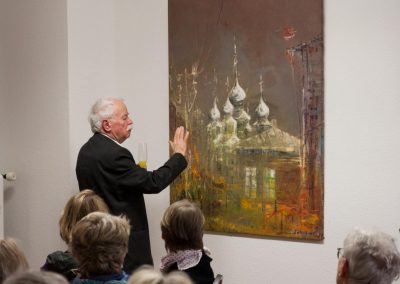
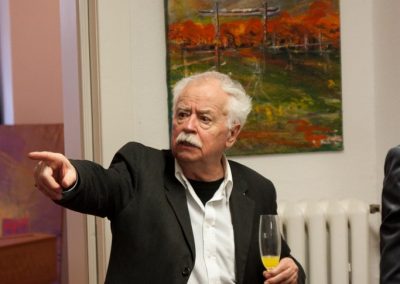


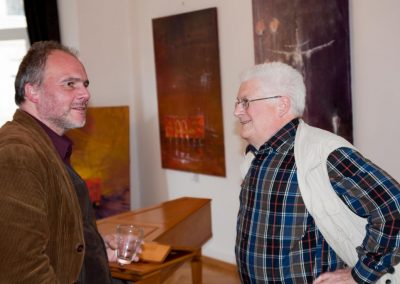












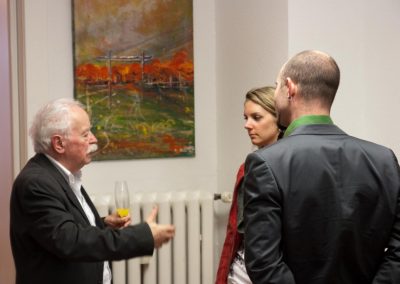




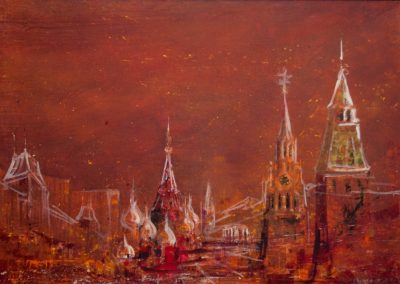



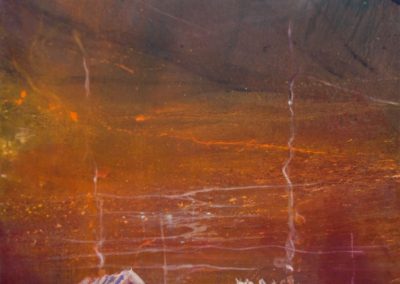




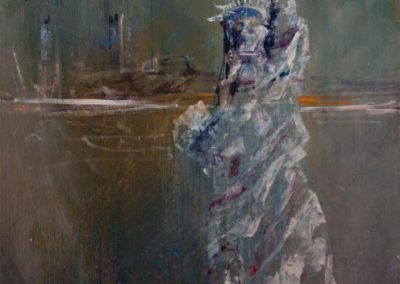



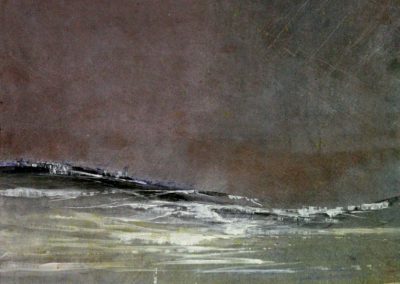


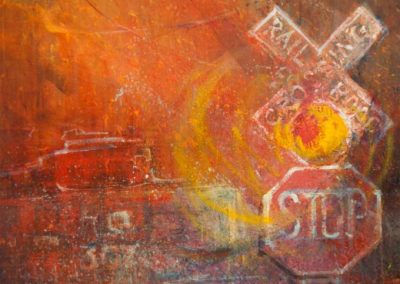

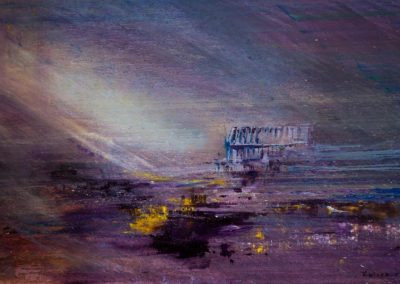















Recent Comments